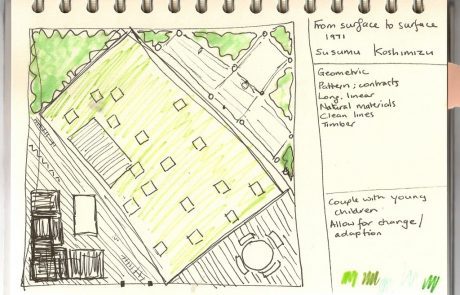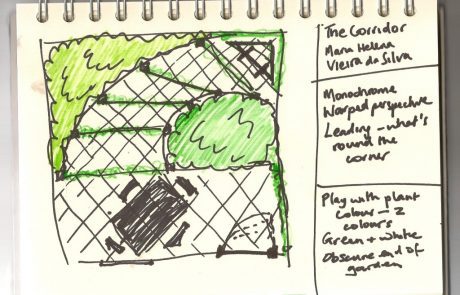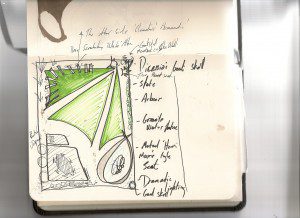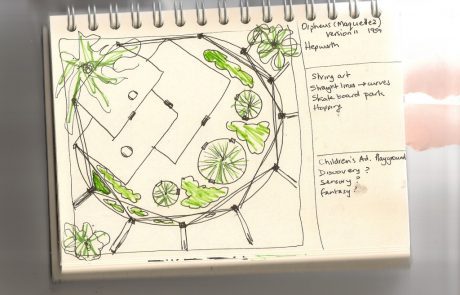Garden Design School

Over the last few days I have been delivering a short garden design course, teaching to students various aspects of garden design business.
Monday was spent exploring the various facets needed to run your own garden design practice. The various aspects required to run a garden design business including health and safety issues, legal and contractual issues, employment and sub contractors, and how to present designs to your clients. Both Sarah and Joan have been running their own garden design practice for a year or so. Each of them have had some business and are producing designs that they have seen built, however they both had lots of questions regarding how to run a successful business. We took the agenda of our Garden Design Open Day and discussed the various scenarios that may present themselves to a practising garden designer as well as feasibility of running a small business in the current climate and making a living at being a garden designer. In particular garden designers seem to struggle with specification writing and scope of works, and whilst they may work with a sub contractor in producing a budget, often they would like to give clients a ball park figure of the costs of a build alongside their design presentation. We identified a simple process for both Sarah and Joan to employ to surmount this problem whereby they have a standard set of garden specifications which they can tailor according to the specific design.
On Tuesday we visited the Tate Modern and looked at how we can find inspiration from contemporary and modern art for modern garden design. After a brief synopsis of the history of modern art we started on level 3 in the poetry and dream room each of us selecting a picture to provide inspiration to the garden design we were about to produce.
I explained the basics of good garden design including rhythm, pace, proportion and balance and making sure that the design suits the environment in which it is being crafted.
We repeated the process a couple of times each of us selecting a work from which to sketch up ideas.
We then selected pieces for each other, making the challenge harder as we needed to seek inspiration from someone else’s choice.
We continued drawing through lunch introducing client profiles to the task. So Barbara Hepworth Orpheus Maquette 2 became the source of inspiration for a childrens’ adventure playground.
As we continued through the afternoon, we designed gardens for a career minded design led couple in their late 40s and a young family.
I gave both the garden design students homework and suggested that they try repeating this task at least once a week, to help them develop a bank of ideas they can store in their palette of ideas ready to be utilised in designs.
Approaching garden design with this mindset also helps to take the garden design process back to grass roots (pardon the pun) and help to fused creativity, art and gardens at the front end of the process making applying the practicalities develop with a creativity flow. It makes you understand the rudiments of design and how to place things within a space. To analyse the art piece and consider how it makes you feel and what your emotional response is to the art, helps inform the ‘unexplained’ something that can be the difference between a garden that works and one which doesn’t.
Wednesday was SketchUp day the tuition progressed from with covering the basics of SketchUp for garden design and what all the tools do before moving onto the students’ real projects for them to practise. Claire took over in the afternoon as we looked at importing images, for example photographs to use as backdrops, as well as more advanced processes such as modelling terrain by use of SketchUps sandbox tools. We concluded the day by taking an overview of the various functions of SketchUps 2D companion Layout. We looked at how this could be used as a presentation tool as well as the various possibilities for 2D rendering.







